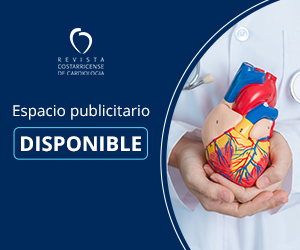
Antihypertensive therapy recommendations: the importance of combinations
Endorsed by the Central American and Caribbean Society of Cardiology
The present work is the result of an initiative to analyze, summarize, and show the latest scientific evidence on the subject of hypertension and the implementation of the best available therapeutics. This document was created with the joint collaboration of medical specialists to give a local perspective to the management based on the best scientific evidence and in the context of the Central American and Caribbean region. This paper has the scientific and academic support of the Central American and Caribbean Society of Cardiology and is the first of its kind to address the problem and topic of hypertension. It was developed from a detailed review of the scientific evidence using the main medical search engines, selecting the pivotal and population-based studies with the highest level of evidence available. The intention is to provide simple information, with easy-to-implement recommendations to implement in the daily management of patients with arterial hypertension. This document had the logistic support of Servier Laboratory, both with the authors as well as its editing; however, the clinical information presented was not conditioned by the laboratory. This material is the responsibility of the authors.
Key words: Hypertension, single pill combined therapy, antihypertensives, cardiovascular risk.

Severe Tricuspid Stenosis Secondary to Cardiac Carcinoid Disease: Case Report and Literature Review
Tricuspid stenosis is an unfrequent valvulopathy that can be caused by multiple etiologies, including rheumatic disease and infectious endocarditis. In rare occasions, it occurs in the context of a carcinoid syndrome, in what is known as carcinoid heart disease. This condition causes fibrosis of the valves and the endocardium of the right ventricule, which can progress into right ventricular failure, worsening the patient´s prognosis. In this article, we present a case of a severe tricuspid stenosis in which this ethiology is suspected. We show the echocardiographic images obtained for the diagnosis (two-dimensional imaging, multimodal imaging and 3D echocardiography), and we discuss the clinical and diagnostic implications, therapeutic options and prognosis of this rare condition.
Key words: Tricuspid stenosis, carcinoid syndrome, right cardiac failure.

Introduction and objectives: Heart failure (HF) is a growing public health concern. While beta-blockers (BBs) are the cornerstone of treatment, achieving target heart rate reductions can be difficult due to side effects and limited tolerance. Ivabradine, a unique inhibitor of the If current, offers a complementary approach to controlling heart rate without affecting contractility. This study aimed to evaluate the effectiveness of adding ivabradine to BB therapy in patients with HF.
Methods: A retrospective observational study was conducted at a private hospital in San José, Costa Rica. Seven cases of patients treated with BBs who were subsequently added to ivabradine were analyzed. Demographic data, clinical characteristics, heart rate before and after ivabradine, NYHA functional class, and selected laboratory values were collected.
Results: Ivabradine significantly reduced resting heart rate by an average of 26.87 beats per minute. Forty-two-point eight-six percent (42.86%) achieved the target dose of their initial BB after adding ivabradine. NYHA functional class remained stable or improved in all cases.
Conclusions: These results suggest that adding ivabradine to BB therapy may be an effective strategy to optimize heart rate control in patients with HF. This approach may improve BB tolerability, leading to greater target dose management and possibly better clinical outcomes.
Key words: Heart failure, Ivabradine, Beta blocker.











